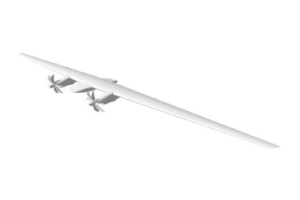HERWINGT TOP LEVEL OBJECTIVES
HERWINGT will develop, validate, down-select, mature, and demonstrate concept, architecture, design, and the key technologies that enable addressing an innovative wing design for a Hybrid Electric regional aircraft (HER) with a maximum capacity of 100 seats and a range of 500 to 1000 km. Two main challenges will be addressed covering most of the potential design space with the following targets:

Reference Configuration:
- An up-scaled A/C equipped with 2020 State of the Art focused in [50:100] Pax & <1000Nm
- Based on existing A/C and 2020
- Developments (Clean Sky I & II as preliminary reference)
- To be provided and developed by HERA

Baseline Configuration:
- An A/C equipped with a novel ultrahigh performance wing using SAF and batteries/H2 fuel tanks and cells for electrification.
- Targeting a minimum fuel reduction of 15% and structural weight reduction of at least 20% when compared to a 2022 SoA wing.
- Targeting TRL5 by end of HERWINGT phase1 (Q4/2025)

Disruptive Configuration:
- An A/C equipped with a novel ultrahighperformance wing exploiting non drop-in fuels such as hydrogen (dry wing) and with a distributed propulsion system.
- Targeting a minimum fuel reduction of 15% and structural weight reduction at least 20% when compared to a 2022 SoA wing.
- Targeting TRL2 by end of HERWINGT phase1 (Q4/2025)
The wing design process will be challenging due to the necessity to incorporate new technical solutions relevant to the wing systems, such as the Ice Protection system, the Fuel System, and the Propulsion system. In addition, all the proposed technical solutions should be fully aligned with the overall target to reduce emissions.
These challenges are translated into thirteen technological objectives (TOs)
- the identification of the key aspects of the technology and the specification of a structural demonstration plan.
- Demonstrations based on reliable simulations and virtual testing after having ensured the compatibility between the design and the simulation model.
- The major critical function aspect for the functionalities must be verified through extensive testing. Wind tunnel testing is part of this verification.
- Virtual testing should be performed for the full wing-level demonstrations.
- Aggregated results derived from the validation phase, either physical or virtual, of the proposed demonstrators.
- Evaluation of the novel technologies after being applied on a real ATR wing.
- Evaluation of the virtual testing results of the wing design as accrued from TO1
The level of interdependency among the TOs is such that improvement in a single TO could improve the quantitative target in several directions. The latter show that more than 80% of the reduction in fuel consumption will result from drag reduction while wing mass reduction will have a considerably limited effect.
Even though the TOs 5 to 12 have a direct positive impact on drag reduction, the reduction in fuel consumption will require a multidisciplinary approach and the apt selection of technologies, aligned with such an approach, is highly related to the successful completion of the TOs 1 to 4.
Finally, HERWINGT commits to delivering:
Digital twins and a life cycle assessment of the components, subsystems, and full wing system compatible with the reference aircraft digital framework and requirements
A roadmap toward the wing full-scale demonstration at aircraft level with a first flight
A qualification and certification plan linked to the proposed activities and suitable for Hybrid-Electric Regional aircraft (HERA)